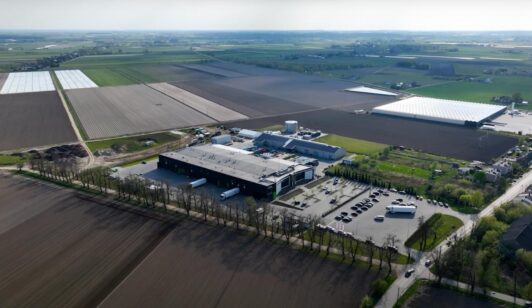
4 min
Five perspectives on the design of contract management applications on low-code platforms

Introduction
Among many business processes in an organization, the contract management seems to be one of the most critical. The efficiency of this process directly affects the quality of customer service and the proper functioning of the back-office area. The level of digitization and automation of the contract lifecycle management as well as the degree of integration with other processes is nowadays crucial for the proper functioning of an organization.
The experience of many companies shows how badly executed contracts (incorrectly run process, incorrect verification, unconscious acceptance of risk) affect the business. That is why, apart from the proper construction of the contract’s content, it is crucial to digitize its process. This is important for both, contracts signed with contractors (e.g. suppliers) and revenue contracts concluded with clients.
In this article, we would like to emphasize the importance of looking at digitization of this process, on low-code platforms or other BPM/workflow solutions, from many perspectives. Therefore, if you plan to implement this process or want to improve the current one, our article may be helpful in a broader approach of process architecture planning.
The article does not describe how an ideal contract process should look like and what is the most appropriate platform for its digitization, but it will indicate important points and perspectives that need to be taken into account when optimizing and streamlining the whole agreement lifecycle as part of your digital transformation strategy.
1. The financial control perspective
The contract process should primarily allow proper verification of the terms and conditions of the agreement concerning finances (contract budget, guarantees, payment deadline, etc.). In addition to these obvious functions, the contract’s object should always be budget related. The budget process together with the entire budget matrix is often constructed in a separate system and records all costs assumed in the organization, broken down into appropriate dimensions – branches, categories, projects, cost-centers, etc. The agreement form should have attributes that classify the contract value in relation to the budget dimensions. Thanks to this, users who accept the agreement have the right perspective to decide on the signing of the contract. What’s more, later they can control the consumption of the planned budget and respond to any overspending.
On the other hand, the contract should be link to accounting systems as well as the invoice workflow to allow monitoring of the consumption of the contract value. Thanks to this connection, we can also accelerate invoice assignments and its overall settlement. A similar situation applies to revenue contracts and linking them to sales invoices and the assumed sales plan.
2. Legal verification perspective
From this perspective, you should look at the process requirements in terms of accuracy and time to verify the provisions of the contract from the legal side. Our system should ensure iteration in the context of agreeing the content of the contract with legal department, monitor deadlines and escalate tasks. The key is to provide the opportunity to work on one version of a document in change tracking mode. Today, many web systems also allow simultaneous editing of the same document by many users (e.g. applications from the Microsoft Office365 ecosystem or Google Docs).
The contract lifecycle process should be designed to improve the communication of business owners with the legal department as well as to speed up work on reconciliation and final approval. From a legal perspective, the workflow of contracts should also cover the contract templates management.
3. Management perspective
This perspective may be the most important of all covered in this article. It allows us to look from the perspective of a manager who makes the decision about positive verification and final acceptance of the contract in the process. In this area, the most important thing is to provide adequate information about the contract in single overview. Therefore, the agreement form should present any deviations from the standard contract conditions, risks, a summary of verification path, user comments, related processes, etc.
This perspective also requires the proper design of acceptance paths, which are often quite complicated and require a lot of work from the DEV team. Acceptance matrices in each organization are different, but often require many business rules, good synchronization with organizational structure data, and parallel processes. A proper workflow should accurately cover the business requirements of the organization in this area, so that the process gives confidence that the contract is accepted by the right people/roles.
When approaching the process from the management perspective, it is also important to remember about all functions related to the centralization of knowledge about contracts, monitoring of budgets and the possibility of a holistic view of all open contracts processes (the possibility of measuring KPIs, dead steps, bottlenecks, etc.).
4. Document workflow perspective
Contract management application should organize and automate the whole lifecycle of agreement. Therefore, it should ensure proper role allocation, iterative reconciliation, appropriate verification path, ownership, and finally acceptance and monitoring of active contracts.
It is also important to ensure tracking of changes and the history of document workflow, as well as standard functions such as delegations and task escalations. All these functions accelerate the process of the contract, up to the stage of its final signature and activation in the system.
The signature itself can also be automated by using an e-signature, both internally and on the contractor/customer site. Functions related to e-signature can be embedded in the solution or be implemented through integration with external online platforms, e.g. DocuSign
5. Document repository perspective
The last important perspective is the centralization of all information about contracts in the repository which gives quick access via web page. The system should store information on the entire process of agreeing and accepting the contract, as well as attachments with signed documents. Such a repository, often called the Central Register of Agreements, has a dedicated permission scheme based on the organizational structure. In situation of auditing or due diligence it should allow access to set of documents by external users.
Features such as: generating barcodes, integration with digital mailrooms, linking to physical documents are just some of the topics that, when configured properly, can speed up this area of the contract process. Finally, this perspective tells us about providing the right interface for quick searching using all attributes, which ultimately speeds up the access to information for all stakeholders.
Summary
The contract lifecycle process may be simple enough in some organizations, providing only centralized digital access to all contracts. However, in larger organizations it may be considerably extensive and, what is more, integrated with other processes or external systems to gather all business information needed to manage a given contract lifecycle. Approaching such process from the five perspectives described above, helps ensuring a proper system process of contracts flow and often gives new optics for business from the level of a single form, which may “tell the truth” about the condition of a given project, budget or sales of a company.
Want to know how the right contract process should look like in your organization? Please contact us.

